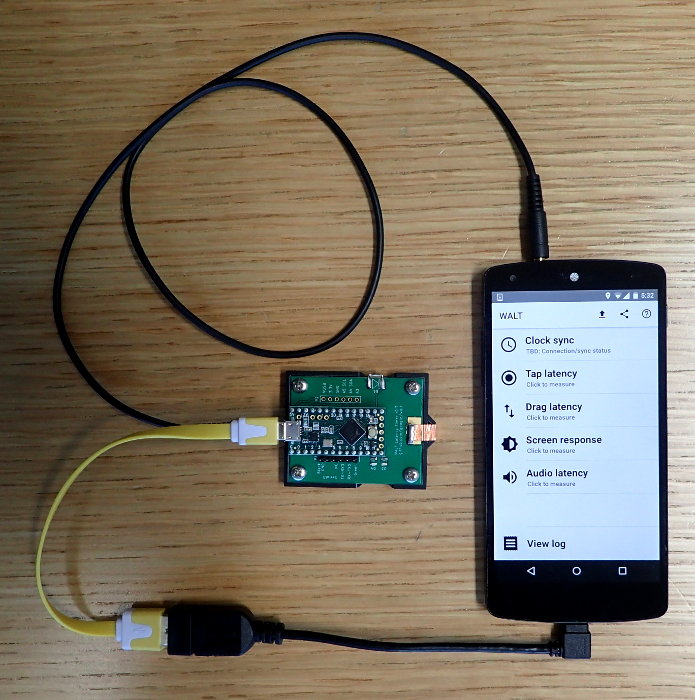|
|
||
|---|---|---|
| .. | ||
| android/WALT | ||
| arduino | ||
| docs | ||
| hardware | ||
| ios | ||
| pywalt | ||
| server | ||
| AUTHORS | ||
| CONTRIBUTING.md | ||
| CONTRIBUTORS | ||
| LICENSE | ||
| METADATA | ||
| MODULE_LICENSE_APACHE2 | ||
| OWNERS | ||
| README.google | ||
| README.md | ||
README.md
WALT Latency Timer
DISCLAIMER: This is not an official Google product.
- Post about WALT on Android Developers Blog
- Instructional videos showing how to use WALT
- Detailed usage instructions
- Mailing list - walt-discuss
- Low-traffic mailing list for major announcements walt-announce
WALT is designed to measure the latency of physical sensors and outputs on phones and computers. It can currently perform the following measurements:
- Tap latency - time from the moment a finger-like probe touches down (or up) on the screen until the kernel timestamps an ACTION_DOWN (or ACTION_UP) event. This physical contact with the screen is timed using an accelerometer mounted on the probe.
- Drag latency (scroll).
- Screen draw latency - using a photodiode that detects whether the screen is black or white.
- Audio output and microphone latencies.
- MIDI input and output latencies
The WALT app for Android can be installed from Google Play or downloaded in the releases section; the iOS app must be built from source.
Notes
- Hardware build instructions can be found in this repository under
hardware/. - Clock synchronization details are described here.
- The Android/iOS device and Teensy clocks have a tendency to diverge due to differing clock frequencies. This means they will go out of sync after several minutes. The workaround is to use the app to re-sync the clocks. Some, but not all tests in the app will sync the clocks when starting a measurement.
- Python code used to communicate with WALT from Linux and ChromeOS can be found here.
